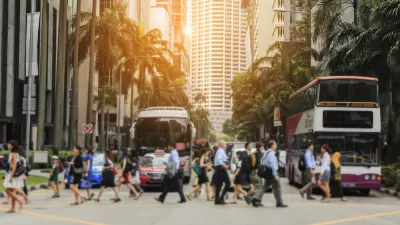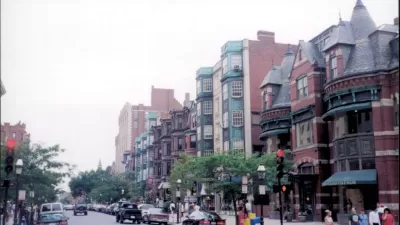The lives of Seoul's poorest residents in squalid below-ground housing are brought out of the shadows in the film "Parasite."

The film "Parasite," winner of numerous Oscars earlier this year, highlighted the extreme economic inequality in South Korea and the plight of Seoul’s urban poor, including the housing challenges they face.
"The fictionalized story reflects the lives of Seoul’s so-called dirt spoons, the urban poor, many of whom live in semi-basements in the congested city, where living high and dry — in apartment towers and away from the honking, yelling and odoriferous squalor of down below — symbolizes the wealth and status of the gold-spoon class," writes Choe Sang-Hun.
The city’s richest residents are segregated not just geographically in wealthy neighborhoods, notes Choe. "In Seoul, wealth is measured by how high you live, said Kim Nam-sik, a real estate agent in Seoul’s quiet Seongbuk district, home to dozens of foreign ambassadors’ residences and where the rich family of 'Parasite' lives."
People living in the basement homes — called "banjihas" — contend with street-level noise and dirt and substandard living conditions. "They remain largely invisible unless you explore back alleys at night and see their lit windows below street level. Many live, literally, in the long shadows of shopping and apartment towers," says Choe.
FULL STORY: For Seoul’s Poor, Class Strife in ‘Parasite’ Is Daily Reality

Planetizen Federal Action Tracker
A weekly monitor of how Trump’s orders and actions are impacting planners and planning in America.

San Francisco's School District Spent $105M To Build Affordable Housing for Teachers — And That's Just the Beginning
SFUSD joins a growing list of school districts using their land holdings to address housing affordability challenges faced by their own employees.

The Tiny, Adorable $7,000 Car Turning Japan Onto EVs
The single seat Mibot charges from a regular plug as quickly as an iPad, and is about half the price of an average EV.

As Trump Phases Out FEMA, Is It Time to Flee the Floodplains?
With less federal funding available for disaster relief efforts, the need to relocate at-risk communities is more urgent than ever.

With Protected Lanes, 460% More People Commute by Bike
For those needing more ammo, more data proving what we already knew is here.

In More Metros Than You’d Think, Suburbs are Now More Expensive Than the City
If you're moving to the burbs to save on square footage, data shows you should think again.
Urban Design for Planners 1: Software Tools
This six-course series explores essential urban design concepts using open source software and equips planners with the tools they need to participate fully in the urban design process.
Planning for Universal Design
Learn the tools for implementing Universal Design in planning regulations.
Smith Gee Studio
City of Charlotte
City of Camden Redevelopment Agency
City of Astoria
Transportation Research & Education Center (TREC) at Portland State University
US High Speed Rail Association
City of Camden Redevelopment Agency
Municipality of Princeton (NJ)





























